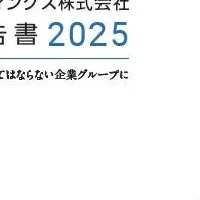
Global HR Analytics Market Set to Reach Nearly $10 Billion by 2031 with Significant Growth Driven by Talent Management Strategies
HR Analytics Market: An Overview
The global HR analytics market is experiencing an exceptional growth trajectory, driven by several factors that reflect the evolving needs of organizations in today's dynamic workforce environment. According to a recent report from The Insight Partners, the market size was valued at $3.73 billion in 2024 and is anticipated to reach an impressive $9.89 billion by 2031, boasting a spectacular CAGR of 14.9% from 2025 to 2031. This remarkable expansion highlights the increasing focus on data-driven approaches in human resources, particularly in recruitment and employee engagement.
Driving Forces Behind Growth
1. Increasing Demand for Talent Acquisition and Retention
As organizations battle to attract and retain top talent, the implementation of HR analytics has become indispensable. Firms are harnessing data insights to enhance recruitment processes and significantly reduce turnover rates. The shift towards a more remote and hybrid workforce has further intensified this demand, necessitating advanced analytics to effectively manage geographically dispersed teams.
2. Focus on Employee Experience
The elevated emphasis on employee experience is propelling the HR analytics market to new heights. Insights derived from HR analytics allow organizations to translate workforce sentiment into actionable strategies to improve performance and retention rates. Research by Gallup indicates that highly engaged teams yield up to 23% higher profitability and experience 81% lower absenteeism. This correlation emphasizes the necessity for HR analytics tools that can effectively measure and sustain engagement levels.
3. Technological Integration
Advanced technologies like Artificial Intelligence (AI) and Machine Learning (ML) have significantly improved the capabilities of HR analytics tools, facilitating more accurate predictive modeling and generating deeper insights into employee performance and behavior. The combination of these technologies with big data analytics allows organizations to optimize their human resource strategies in real-time.
Market Segmentation
The HR analytics market can be segmented based on several factors:
- - Components: Split into software and services, with software comprising the largest share as of 2024.
- - Organization Size: Divided between large enterprises and SMEs, where large enterprises dominate.
- - Deployment: Featuring cloud and on-premises solutions, the cloud segment leads the market.
- - Industry Verticals: Encompasses sectors like IT and telecom, manufacturing, healthcare, and education, with the IT and telecom industry currently holding the largest share.
Geographical Insights
As of 2024, North America is the leading region in the HR analytics market, followed by Europe and the Asia Pacific. This regional advantage can be attributed to the high adoption rates of technology and data-driven decision-making processes present in North American organizations.
Looking Ahead
The future of the HR analytics market looks promising, fueled by continuous investments in AI, Machine Learning, and cloud-based solutions. This will further solidify HR analytics as a key strategic necessity rather than a mere supplementary tool in human resource management. As businesses increasingly recognize the importance of leveraging data to align their talent strategies with organizational goals, the role of HR analytics will only amplify.
Conclusion
In conclusion, the HR analytics market presents an exciting landscape filled with opportunities for various stakeholders, including software providers, service providers, and end-users. As organizations navigate this transformative environment, the need for comprehensive insights into workforce dynamics and employee engagement will drive further demand for HR analytics solutions. The report from The Insight Partners is an invaluable resource for stakeholders keen on understanding and succeeding in this rapidly evolving market.
Topics Business Technology)










【About Using Articles】
You can freely use the title and article content by linking to the page where the article is posted.
※ Images cannot be used.
【About Links】
Links are free to use.